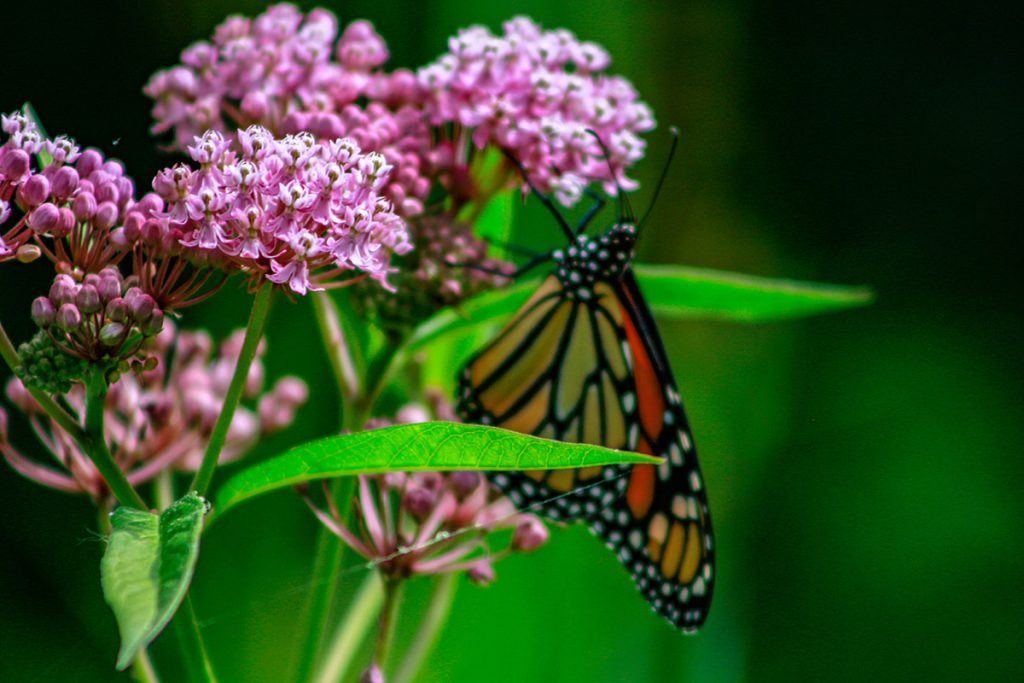The environmental benefits of the Conservation Reserve Program (CRP) are vast, but one of the most impactful is the reduction of greenhouse gas (GHG) emissions. Through CRP practices, 30 million metric tons of CO2 were removed from the atmosphere in 2020, the equivalent of removing 6 million cars from the road.
While all CRP practices benefit the environment, some specifically help to reduce emissions of GHGs by sequestering carbon. Carbon sequestration is the process of capturing and storing carbon dioxide in the soil, preventing it from causing further damage to the atmosphere.
Here, we will examine some of the CRP practices that contribute to carbon sequestration and remove damaging CO2 emissions from the air.
Establishment of grasses, forbs, and trees
Some of the most basic CRP practices, the establishment of grasses and forbs, are also some of the most beneficial for GHG reduction. Practices like CP1, the establishment of permanent introduced grasses and legumes, and CP2, the establishment of permanent native grasses, sequester carbon in the soil.
Tree planting, under CP3/3A, is another major contributor to biologic carbon sequestration. Growing plants like grasses, forbs, and trees help to remove that CO2 from the atmosphere and trap it in the ground.
Wildlife food plots
Planting food plots for wildlife, as described in CP12, is another CRP practice that helps reduce GHG emissions. Forage or small grains, like buckwheat and rye, are planted on farmland to provide wildlife with key sustenance during the winter.
Not only does the practice provide crucial food and shelter to these species, but it also improves soil health and sequesters carbon.
Filter strips and prairie strips
Grass filter strips are used on CRP land primarily to protect waterways and prevent soil erosion. But like CP1 and CP2, filter strip establishment is also a method of carbon sequestration. Under CRP practice CP21, filter strips are planted along waterways like streams, lakes, and wetlands to intercept sediment and nutrients before they enter the water.
Similarly, prairie strips, as described under CP43, are vegetative cover grown along cropland’s natural contours to reduce erosion and sequester carbon. They also provide wildlife habitat and improve water quality.
Farmable wetlands
Restoring wetlands on CRP farmland is another method of increasing carbon sequestration. There are three official farmable wetlands practices in CRP: CP39, CP40, and CP41. These practices are geared towards constructed wetlands, aquaculture wetlands, and flooded prairie wetlands, respectively.
By constructing wetlands or reestablishing wetlands on land that was previously used for commercial purposes, CRP increases wildlife habitat while removing detrimental CO2 from the atmosphere at the same time.
Pollinator habitat
Initiatives like CRP’s CP42 to establish pollinator habitats are critical for agricultural and food production. Pollinators like native bees, butterflies, honeybees, and birds are imperative for the pollination of more than 35% of our nation’s food supply and over 80% of all plants.
But while pollinator habitat establishment is crucial for improved crop yields, creating shelter for pollinators, and protecting the soil, it is also an effective method of carbon sequestration. Plants like wildflowers are grown to both provide important nutrition to these pollinators as well as to capture atmospheric carbon in the soil.
Other environmental benefits
In addition to reducing GHG emissions, CRP provides many other benefits to the environment. Practices like the ones listed here help protect vulnerable soil from erosion and enhance water quality in the area. They also boost local wildlife populations and provide crucial habitats for pollinators.
While the environmental benefits of CRP are clear, understanding your contract requirements and establishing the practices on your land can be complex. If you’re looking to begin a CRP project but need assistance getting started, reach out to us at FDCE. We have decades of experience helping landowners fulfill their CRP contract obligations. No matter where you are in the process, FDCE can help.

